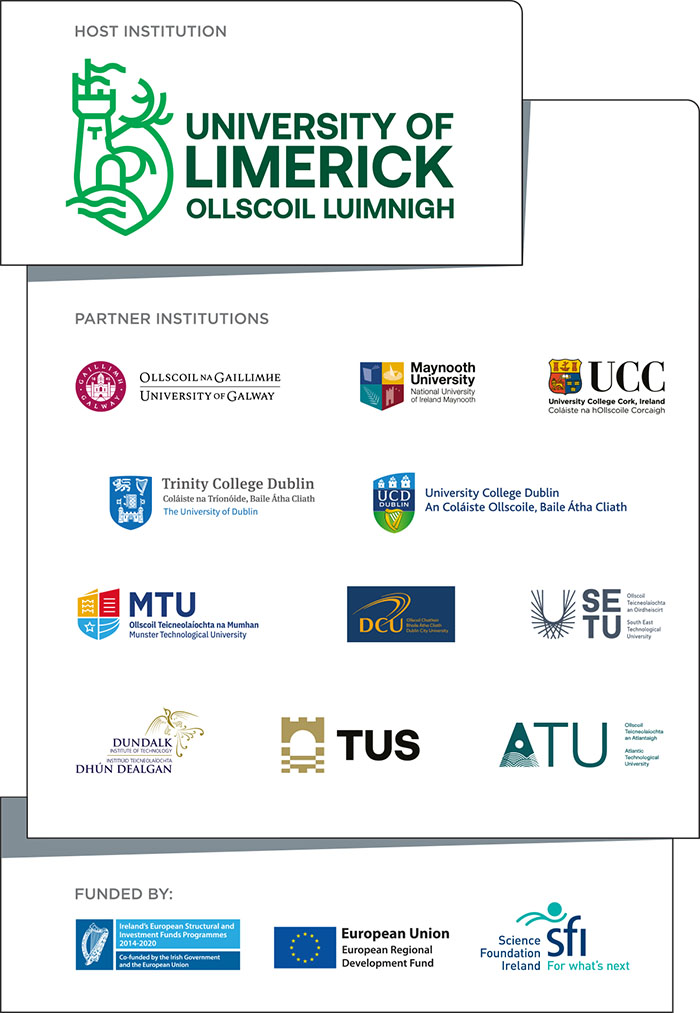You are here
A large class of software-intensive systems, including those for industrial automation, consumer electronics, airplanes, automobiles, medical devices, and civic infrastructure, must interact with the physical world. More advanced systems, such as unmanned autonomous systems, don’t just interact but also perceive important structural and dynamic aspects of their operational environment. To become interactive, an autonomous system must be aware of its physical environment and whereabouts, as well as its current internal status. This ability helps software-intensive systems sense, draw inferences, and react by exhibiting self-adaptation. A common understanding about the process of self-adaptation is the ability of a system to autonomously monitor its behaviour and eventually modify the same according to changes in the operational environment or in the system itself. The Lero research in this field focuses on the main challenges stemming from the R&D of autonomous and adaptive systems:
- Autonomy requirements engineering: Deals with the problem of making the autonomy requirements explicit and targets an integral platform where requirement engineers can formalize autonomy requirements and reason about the autonomous and self-adaptive behaviour of targeted systems.
- Modelling self adaptation: Deals with the problem of making self-adaptation explicit for autonomous and cyber-physical systems.
- Verification and validation of self-adaptation: Targets the evaluation of self-adaptive behaviour along with automatic detection of unintended interactions and behaviour.
- Awareness: Deals with the problem of artificial awareness through complex knowledge representation structures, exhaustive logic algorithms and behavioural reasoning for self-adaptation. The notion of awareness shall emerge as complex mix of perception, recognition, thinking, and prediction.
- Human-computer interaction: Targets all the levels of autonomous behaviour, including partial autonomy. This includes analyzing feedback types from human-computer interaction and devising novel mechanisms for exposing the control loops to the users, keeping the users of self-adapting systems "in the loop" to ensure their trust.
Impact
Lero has developed the Autonomy Requirements Engineering (ARE) within a joint project with ESA ESTEC where the proof-of-concept case study was the ESA's BepiColombo mission. The results of this project were presented at the ESA's Final Presentation Days. This research work has inspired a book entitled "Autonomy Requirements Engineering for Space Missions" authored by Emil Vassev and Mike Hinchey and published by Springer's NASA Monographs in System and Software Engineering. In 2016, the publisher announced the translation of this book in Chinese. Note that Lero is planning a second version of the book where results from the Lero 3 research on ARE will be published, e.g., integration of KnowLang and ASSL.
ARE was also included in the final term of the ASCENS project as part of the research conducted by Lero 2 on " Knowledge representation and self-awareness". The EU commission awarded this work the highest possible mark "excellent". The approach has been used to capture the autonomy requirements of the three ASCENS case studies, including the Volkswagen's eMobility platform.
The ARE approach has been presented at the NASA's IV&V Workshop and consecutively, an invited paper on ARE was published in NASA's journal "Innovations in Systems and Software Engineering".
Case Study
ARE has been used in a few proof-of-concept case studies including case studies of capturing the autonomy requirements for the ESA's BepiColombo mission and capturing the autonomy requirements for the Volkswagen's eMobility platform. BepiColombo is an ESA mission to Mercury scheduled for launching in 2018. BepiColombo will perform a series of scientific experiments, tests and measures.
The BepiColombo case study outlined both the ARE approach and generated a proof-of-concept outcome in the form of special goals models and autonomy requirements that can be further used to design and develop autonomy features for BepiColombo. The results were presented at the ESA's Final Presentation Days event.
Related Publications
- Emil Vassev and Mike Hinchey. Autonomy Requirements Engineering for Space Missions. NASA Monographs in Systems and Software Engineering. Springer, August 2014. ISBN: 978-3-319-09815-9. DOI: 10.1007/978-3-319-09816-6 and the book at Amazon.com
- Emil Vassev and Mike Hinchey. Capturing Autonomy Features for Unmanned Spacecraft with ARE, the Autonomy Requirements Engineering Approach. Innovations in Systems and Software Engineering - a NASA Journal. Volume 12(2), June 2016, pp. 95-107. DOI: 10.1007/s11334-015-0257-3
- Emil Vassev and Mike Hinchey. Autonomy Requirements Engineering. IEEE Computer, Volume 46 (8), August 2013, pp. 82-84. DOI: 10.1109/MC.2013.267
- Emil Vassev and Mike Hinchey. KnowLang: Knowledge Representation for Self-Adaptive Systems. IEEE Computer, Volume 48 (2), February 2015, pp. 81-84. DOI: 10.1109/MC.2015.50
- Emil Vassev. Requirements Engineering for Self-Adaptive Systems with ARE and KnowLang. EAI Endorsed Transactions on Self-Adaptive Systems, Volume 15 (1), 2015, pp. e6. ICST, ISSN 2410-4051. DOI: 10.4108/sas.1.1.e6





